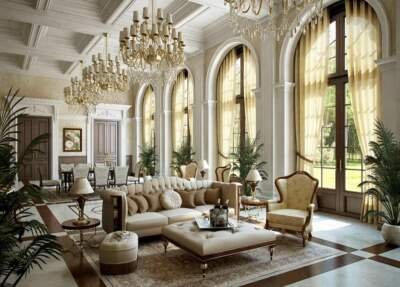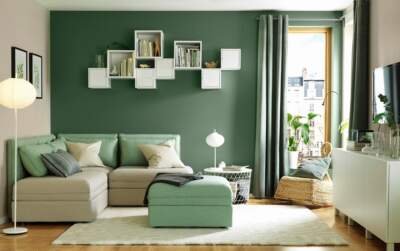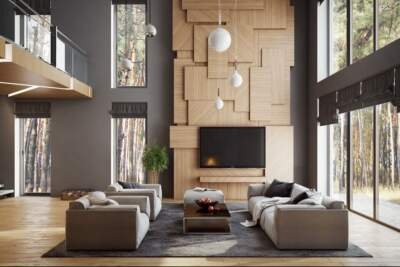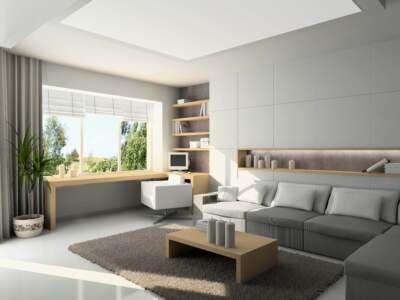Design and Construction : Navigating the Interplay with Architecture
Navigating the Divide: Architecture and Interior Design
In the realm of design and construction, a common misconception prevails—the conflation of architecture and interior design. It is crucial to discern the distinction between these two disciplines, each holding its unique significance. This article delves into the realms of architecture and interior design, unraveling their individual complexities and roles.
Architecture: Mastering the Art of Construction
Architecture stands as the artistic pursuit of designing and constructing buildings and systems that cater to the multifaceted needs of humanity. This all-encompassing field integrates a diverse array of sciences, from history and mathematics to psychology and law. Understanding the intricacies of human life, history, and psychological influences empowers architects to create structures that seamlessly accommodate and enhance human existence.
Beyond Buildings
The term “architecture” extends beyond mere physical structures; it encapsulates the methodologies of constructing and designing various entities. This umbrella term spans computer architecture and software architecture, particularly within the dynamic realm of information technology.
A Tapestry of Art and Functionality .
Architecture is not solely about erecting buildings; it is an art form that composes volumes to address social functions, humanities, and cultural achievements. It reflects the aesthetic and spiritual aspirations of a society within a specific environment and timeframe.

Interior Design: Crafting Spaces with Purpose
In stark contrast, interior design is the craft of organizing the internal space of a building to be both appealing and functional, harmonizing seamlessly with architectural nuances.
The Art and Science of Interiors
a holistic and professional practice, seeks to create environments that not only meet human needs but also elevate the aesthetic experience. This art and science combination involves meticulous considerations—from murals, wallpaper, and flooring to furniture selection, lighting, and decorative finishes.
Beyond Decoration
While the terms “interior decoration” and “interior design” are often used interchangeably, the latter involves a more comprehensive approach. Interior design entails manipulating spaces, coordinating elements, and crafting cohesive, beautiful designs that transcend the mere selection of furniture and accessories.
In conclusion, recognizing the distinctions between architecture and interior design is paramount. Architecture lays the foundation for structures, delving into the complexities of societal functions, while interior design adds the finishing touches, transforming empty spaces into meaningful, aesthetically pleasing environments. This article aims to demystify these disciplines, fostering a deeper understanding of the intricate dance between architecture

The Dual Craftsmanship of Interior Design: Bridging Aesthetics and Functionality-Design and Construction
Introduction:
Embarking on the intricate journey of interior design unveils a multifaceted profession that goes beyond mere aesthetics. This article explores the various facets of the interior designer’s role, from initial analysis to the seamless execution of projects, highlighting the symbiotic relationship between architects and interior designers.
1. Understanding the Interior Designer’s Craft: Decoding Client Needs
Delving into the profession of an interior designer requires a profound understanding of client needs, security requirements, and overarching goals. This foundational analysis sets the stage for a dynamic process that melds artistic vision with functional necessities.
Navigating the Analysis Landscape.Interior Design
The initial stages involve a meticulous analysis of client requirements, ensuring a comprehensive grasp of the desired aesthetic and functional outcomes. This analytical phase forms the bedrock for subsequent design decisions.Design and Construction

2. Crafting Aesthetic and Functional Visions: The Designer’s Odyssey
The heart of interior design lies in generating innovative ideas that harmonize aesthetics and functionality, all while adhering to industry standards. From conceptualization to the fulfillment of predefined criteria, interior designers navigate a creative odyssey.
A Symphony of Form and Function
The design process unfolds as designers translate abstract ideas into tangible plans, considering both aesthetic allure and functional efficiency. Striking a balance between creativity and adherence to standards is paramount.

3. The Presentation Palette: Conveying the Final Vision
Effectively communicating design concepts is an art in itself. Interior designers employ various presentation methods to convey their final vision, ensuring alignment with client expectations.
Subheading: Beyond Blueprints – Mastering Presentation Techniques.Interior Design
Utilizing a diverse range of presentation means, interior designers bring their visions to life. From digital renderings to physical models, each method contributes to a comprehensive understanding of the final project.Design and Construction

4. Technical Mastery: Drawing the Blueprint of Reality-Design and Construction
Interior design transcends creativity, delving into the realm of technical proficiency. From construction drawings to specifications, designers employ scientific knowledge to manifest their visions into tangible structures.
Precision in Construction Drawings
The meticulous preparation of construction drawings and specifications demands a deep understanding of materials, finishes, and technical systems. Collaboration with professionals in mechanical, electrical, and structural engineering is integral.
5. Architects and Interior Designers: Bridging Parallel Worlds
While distinctions exist, architects and interior designers share common ground. This section explores the similarities that bind these two professions, emphasizing the convergence of art and science.
Subheading: The Symbiosis of Architects
Beyond the surface differences, both professions require problem-solving skills, a grasp of technical and artistic terminology, and an unwavering commitment to continuous learning.

6. The Essence of Interior Design: ALGEBRA’s Professional Commitment
Closing the narrative, a spotlight on ALGEBRA underscores their commitment to executing interior design projects with professionalism, delivering results that not only meet but exceed client expectations.Design and Construction
ALGEBRA’s Distinctive Approach.Interior Design
ALGEBRA’s expertise encompasses a holistic approach to interior design, ensuring client satisfaction through meticulous attention to detail, creative finesse, and a dedication to staying at the forefront of industry advancements.
In conclusion, the realm of interior design is a captivating blend of artistic expression and technical prowess. As architects and interior designers traverse parallel paths, the fusion of their expertise contributes to the creation of spaces that seamlessly marry aesthetics with functionality. ALGEBRA stands as a testament to this harmonious synthesis, crafting interiors that transcend expectations and elevate the artistry of design.
Embark on a Design Journey with Saudi Design Group!
Elevate your hotel experience with Saudi Design Group and immerse yourself in our captivating designs that entice guests to prolong their stay. For additional information, connect with us through the following channels:
Visit our website: https://saudidesigngroup.com/
Subscribe to our YouTube channel
Follow us on Snapchat.
Visit our Facebook page
Dear valued customer, for immediate assistance, reach out to us on WhatsApp at +966507945715
or give us a call at +966114222473.
Delve into the realm of interior design and explore the impact of colors.
Read more about….
Considerations for Selecting the Ideal Hotel Furniture
“Ergonomics in Office Design: Maximizing Workplace Efficiency”

